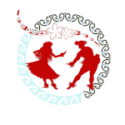Polynesian culture is renowned for its rich tapestry of traditions, including intricate body ornamentation that holds deep cultural and symbolic significance. From head to toe, Polynesian people adorn themselves with a variety of ornaments, each carrying its own unique meaning. In this article, we delve into the diverse array of head, neck, arm, and leg ornaments found across Polynesia, exploring their cultural significance and symbolism.
- Headdresses:
- Tiare Tahiti (Tahitian Gardenia): The tiare Tahiti flower holds great importance in Tahitian culture, symbolizing purity, love, and beauty. Worn in the hair, it signifies femininity and is often used in traditional dances and ceremonies.
- Ula (Red Feathers): Red feathers were historically reserved for chiefs and warriors in Hawaiian culture. Wearing a headdress adorned with ula conveyed prestige, strength, and nobility.
- Necklaces:
- Lei: Lei necklaces, made from flowers, shells, or feathers, are ubiquitous across Polynesia. They symbolize affection, respect, and welcome, often exchanged as gifts or worn during celebrations and ceremonies.
- Shark Tooth Necklace: Known as “lei niho mano” in Hawaiian, shark tooth necklaces were traditionally worn by warriors for protection and strength. The teeth were believed to possess mana (spiritual power) and were often passed down through generations.
- Arm Ornaments:
- Tātau (Tattoos): While not a physical ornament, tattoos play a significant role in Polynesian culture, especially on the arms. Each design carries personal and cultural meanings, representing lineage, bravery, and societal rank.
- Kāhili Bracelets: Kāhili, or feathered royal standards, were also worn as bracelets by Hawaiian nobility. Adorned with colorful feathers, they symbolized royal lineage and authority.
- Leg Ornaments:
- Anklets: Anklets made from shells, seeds, or woven fibers are commonly worn in Polynesia. They serve both decorative and functional purposes, often worn during dance performances or as a symbol of beauty and grace.
- Lauhala Leg Wraps: Woven from pandanus leaves, lauhala leg wraps were worn by both men and women in Hawaii. They provided protection from the elements while symbolizing connection to the land and traditional craftsmanship.
Symbolic Meanings:
- Connection to Nature: Many Polynesian ornaments are crafted from natural materials like flowers, feathers, and shells, symbolizing the deep connection between Polynesian people and their natural surroundings.
- Status and Prestige: Certain ornaments, such as red feather headdresses and shark tooth necklaces, were reserved for chiefs, warriors, and nobility, serving as symbols of status, power, and lineage.
- Spiritual Protection: Ornaments like shark tooth necklaces and tattoos were believed to offer spiritual protection and strength, imbued with mana and ancestral significance.
- Cultural Identity: Through the wearing of traditional ornaments, Polynesian people express and celebrate their cultural identity, preserving age-old traditions and customs for future generations.
Conclusion: Polynesian head, neck, arm, and leg ornaments encompass a vast array of styles, materials, and meanings, reflecting the diverse cultures and traditions of the Pacific Islands. From the tiare Tahiti adorning a dancer’s hair to the intricate tattoos adorning a warrior’s arms, each ornament carries with it a piece of Polynesian history and identity, enriching the cultural tapestry of the region for centuries.
Polynesian hips ornaments
In the vibrant mosaic of Polynesian culture, adornment is not merely an accessory but a language spoken through intricate craftsmanship and symbolism. Among the array of embellishments that grace the Polynesian body, hip ornaments hold a special allure. These adornments, whether worn for ceremonial purposes or daily expression, embody elegance and cultural significance.
- Tīfaifai (Quilted Hip Cloths):
- Originating from Tahiti, tīfaifai are vibrant quilted cloths adorned with intricate designs, often depicting motifs from nature, mythology, or daily life. These cloths, worn around the hips during dance performances or special occasions, symbolize femininity, creativity, and cultural heritage.
- Pāreu (Wraparound Skirts):
- Pāreu, or pareo, are versatile wraparound skirts worn by both men and women across Polynesia. These colorful garments, tied around the waist, serve as practical attire for everyday life while also symbolizing cultural identity and unity. Patterns and colors vary by region, with each design reflecting local traditions and beliefs.
- Kākahu (Feathered Garments):
- In traditional Maori culture of New Zealand, kākahu adorned with feathers were worn around the hips by warriors and leaders as a symbol of prestige and mana (spiritual power). These garments, meticulously crafted from feathers of native birds, exemplify the intricate artistry and reverence for nature inherent in Polynesian culture.
- Tī-Leaf Skirts:
- Tī leaves, woven into skirts known as “hula skirts” in Hawaiian culture, are a symbol of fertility, prosperity, and connection to the land. These skirts, worn during hula dances and ceremonies, evoke the spirit of aloha and celebrate the enduring bond between the Polynesian people and their environment.
Symbolic Meanings:
- Femininity and Grace: Many Polynesian hip ornaments, such as tīfaifai and pāreu, symbolize femininity, grace, and beauty, celebrating the strength and resilience of Polynesian women.
- Cultural Identity: Adornments like pāreu and kākahu serve as tangible expressions of cultural identity, connecting wearers to their heritage and ancestral traditions.
- Unity and Community: Through the wearing of hip ornaments, Polynesian people express solidarity and unity, fostering a sense of belonging and shared cultural pride within their communities.
- Connection to Nature: Whether crafted from feathers, leaves, or cloth, hip ornaments often incorporate elements of the natural world, symbolizing the deep spiritual connection between Polynesian people and their environment.
Polynesian hip ornaments are more than just decorative accessories; they are tangible expressions of cultural identity, artistic expression, and spiritual connection. From the vibrant tīfaifai of Tahiti to the regal kākahu of New Zealand, each adornment carries with it a piece of Polynesia’s rich and diverse heritage, weaving together stories of tradition, beauty, and resilience. Through the art of adornment, Polynesian culture continues to thrive, inspiring admiration and enchantment across the globe.
